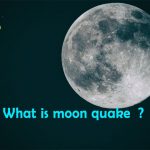The most powerful earthquake ever recorded ??

Now we are in the joy of new year celebrations of 2021. Amid covid 19 pandemic we are finding happiness and hope through new year greetings. This Time we want to think that is pandemic is the only hazard that makes human life harder ?? Answer is simple…There are so many. On that list earthquake is one of the most dangerous hazard human beings have ever faced.
Here we can discuss some shocking facts about earthquake. An earthquake (also known as a quake, tremor or temblor) is the shaking of the surface of the Earth resulting from a sudden release of energy in the Earth’s lithosphere that creates seismic waves. Earthquakes can range in size from those that are so weak that they cannot be felt to those violent enough to propel objects and people into the air, and wreak destruction across entire cities.
The seismicity, or seismic activity, of an area is the frequency, type, and size of earthquakes experienced over a period of time. The word tremor is also used for non-earthquake seismic rumbling. At the Earth’s surface, earthquakes manifest themselves by shaking and displacing or disrupting the ground. When the epicenter of a large earthquake is located offshore, the seabed may be displaced sufficiently to cause a tsunami.
Earthquakes can also trigger landslides and occasionally, volcanic activity. In its most general sense, the word earthquake is used to describe any seismic event—whether natural or caused by humans—that generates seismic waves. Earthquakes are caused mostly by rupture of geological faults but also by other events such as volcanic activity, landslides, mine blasts, and nuclear tests. An earthquake’s point of initial rupture is called its hypocenter or focus. The epicenter is the point at ground level directly above the hypocenter.
Some Shocking Facts About Earthquake
There are several million earthquakes annually
According to the United States Geological Survey, there are around 17 major earthquakes measuring above 7.0 on the Richter scale – and one great earthquake measuring above 8.0 – each year. However, experts estimate that there are actually several million earthquakes annually; many go undetected due to their geographical remoteness or small magnitude.
Standing water smells before an earthquake
Ponds, canals, lakes and other standing water may give off a nasty whiff and become slightly warmer before an earthquake. This is due to gases being released underground as the plates shift. This can contribute to a change in the behavior of wildlife in the area. Scientists from the Department of Life Sciences at the Open University observed toads disappearing before an earthquake which struck Italy in 2009 – and returning afterwards. It is also believed toads detect changes in water chemistry caused by stresses in rocks.
March is not earthquake month, despite what some people believe. True, on March 28, 1964, Prince William Sound, Alaska, experienced a 9.2 magnitude event — one of the biggest ever. It killed 125 people and caused $311 million in property damages. And on March 9, 1957, the Andreanof Islands, Alaska, felt a 9.1 temblor. But the next three biggest U.S. earthquakes occurred in February, November, and December. The devastating major earthquake in Chile of 2010 struck on Feb. 27. And the huge 9.3 temblor that spawned the devastating Indian Ocean tsunami in 2004 occurred on Dec. 26.
Scientists use the different speeds of seismic waves to locate the epicentre (the point on the surface directly above where the earthquake originated) of earthquakes.
Seismometers are used to measure the magnitude of earthquakes. You are unlikely to feel a magnitude 3 earthquake but a magnitude 6 earthquake could potentially cause large damage.
The most powerful earthquake ever recorded on Earth was in Valdivia, Chile. Occurring in 1960, it had a magnitude of 9.5.
A massive 8.8 earthquake in Chile moved the city of Concepción 10 feet to the west on February 27, 2010. This quake also shortened Earth’s day and slightly changed the rotation of the planet.
Earthquakes kill approximately 8,000 people each year and have caused an estimated 13 million deaths in the past 4,000 years.
Aristotle was the first to note that soft ground shakes more than hard ground.
Japan is one of the most earthquake-prone nations in the world. Thousands of earthquakes occur in Japan every year, but most of them are very weak.
Charles Richter was an American scientist who invented the Richter scale (1935)
The earliest recorded earthquake was in China, 1831 B.C
Most earthquakes occur at depths of less than 80 km (50 miles) from the Earth’s surface
The Pacific Ring of Fire is the most geologically active region of Earth
















